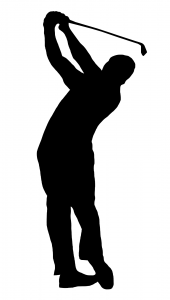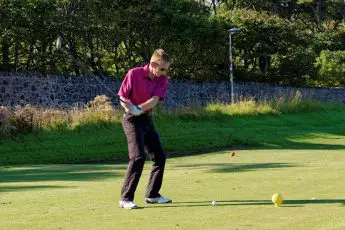Table of Contents
Introduction
In your career or business, you would have come across some facts and concepts that might seem insignificant but are quite relevant to the general success of the profession. Most of these concepts are classified under professional jargon, and they also apply to sports. In golf, most people only see someone hitting balls and trying to sink them in holes. However, when you pick up golf, you would discover that this process is not as easy as it looks. Once you begin your golf training, your golf instructor will walk you through the golf clubs, the rules of the game, golf stance and posture, how to putt and how to swing. You might have to figure out the rest on your own. One aspect that might take a lot of personal practice to master is the golf swing. We have explained the golf swing multiple times on this platform because it can go wrong in multiple ways. In this article, we want to explain how the top of your backswing can affect your impact on the ball and the outcome of your shot. Enjoy!
Common Mistakes to avoid at the top of your backswing
Below are some mistakes golfers make when performing their backswing
Taking the backswing too far
If you want to straighten your shot and improve your swing, you have to make sure that your backswing length is always correct. The top of the backswing is the maximum place that the club shaft should reach after you address the ball and lift the club. The generally accepted method to determine when you reach the top of the backswing is when the shaft of the golf club is parallel to the ground. This means that the golf club will be just above your shoulders and you can gather enough momentum and force to impact the ball and get a straight shot. The problem of taking the backswing too far occurs when a player wants to create more impact and erroneously moves the club farther than required. What the amateur golfer might not realize is that when you have a longer backswing, it makes it harder to impact the ball at the right angle. It takes away your form balance, and the golf swing is all about balance. Correcting this error will allow you to shoot straighter shots.
Pointing the club shaft away from the target
When you address the ball, you are already facing the target. If you perform your backswing and the club shaft is no longer facing the target, then you cannot have a straight shot. After making sure that your golf club is already parallel to the ground, then you have to make sure it is facing the target directly. If it is facing left or right of the target, your ball will go that direction. Another disadvantage of pointing the club away from the target is that it creates multiple moving parts and hinders consistent execution. When your golf club is facing the target, you can easily release your swing with less stress and maintain the line to the follow-through. This will ultimately mean farther and straighter shots.
Improper wrist action
This mistake is quite complex to explain so we would start from the basics. When you take your set-up in readiness to perform your swing, the next thing you do is to address the ball. At this point, you are not supposed to do anything with your hands and wrists until the swing is completed. However, at the top of the backswing, some amateur golfers tend to twist their wrist to make holding the golf club more comfortable. This might guarantee that you won’t have a straight shot. At the top of the backswing, the back of your front hand is supposed to be parallel to your clubface. This indicates that your clubface is in the right position, and it will make a solid impact with the ball on its way down. Twisting your wrist means that your clubface will not be square, and that will result in a weak impact. If you want to hit straight shots, keep this in mind.
 Bending the front arm
Bending the front arm
When you are performing your backswing, you mustn’t bend your front arm too much. Keeping your front arm straight or slightly bent might seem uncomfortable, but it is important to keep it that way if you want to make a solid impact on the ball. Most amateur golfers also bend their front arm because they want to gain more distance on their shots. However, doing this means your club head will have reduced speed, and you cannot make a solid impact on the ball. You would also exert more energy by creating an extra move that has absolutely nothing to do with your golf swing.
Raising the back elbow
When performing your golf swing, your back elbow should be on your body or very close to it. When you raise your elbow and lift it away from the body, you automatically damage the top of the backswing and the entire swing. Keeping the back elbow on your body might not be comfortable, but that is the right way to play the game. Hitting the ball while your elbow is hanging might make you top the ball or hit heavy shots.
Conclusion
Golf is a very interesting sport but it also very complex. Your golf journey will always teach that you have a lot to learn. Even if you are a professional golfer, there is always something new to learn and that knowledge can improve your game significantly. This article has taken a very specific part of the golf process, and we have broken it down into digestible information. The top of the backswing might not seem very relevant, but it affects your game just as much as the other golf swing components. If you practice and improve on perfecting the top of the backswing, you would be able to hit straighter and farther shots. Cheers!

